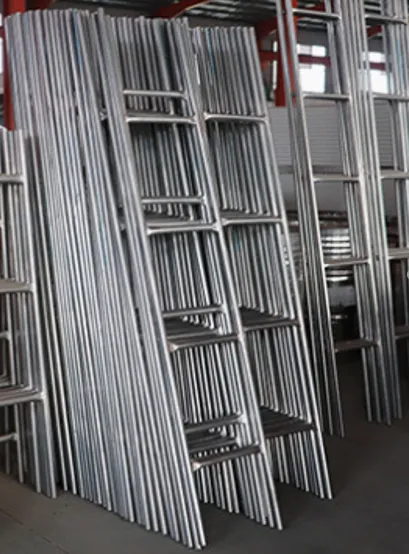loading...
- No. 9, Xingyuan South Street, Dongwaihuan Road, Zaoqiang County, Hengshui, Hebei, China
- admin@zjcomposites.com
- +86 15097380338
- Welcome to visit our website!
grp handrail systems
Understanding GRP Handrail Systems Advantages and Applications
Glass-reinforced plastic (GRP), also known as fiberglass, has become a popular material in various industries due to its superior properties and versatility. One of the significant applications of GRP is in the construction of handrail systems. GRP handrail systems are increasingly favored for their durability, safety features, and aesthetic appeal. In this article, we will explore the advantages and various applications of GRP handrail systems.
1. What is GRP?
Glass-reinforced plastic (GRP) is a composite material made from a polymer matrix reinforced with glass fibers. This combination results in a lightweight yet exceptionally strong material with excellent resistance to corrosion, chemical exposure, and environmental conditions. GRP can be molded into different shapes and colors, making it a highly adaptable material for various purposes, including handrails.
2. Advantages of GRP Handrail Systems
a. Durability and Longevity
One of the foremost advantages of GRP handrail systems is their durability. Unlike traditional materials such as wood or metal, GRP is resistant to rot, corrosion, and rust. This quality means that GRP handrails can withstand harsh weather conditions, making them ideal for both indoor and outdoor applications. Under normal circumstances, GRP handrails can last for decades with minimal maintenance.
b. Safety Features
Safety is critical in any environment where handrails are used, such as staircases, walkways, or elevated platforms. GRP handrail systems often incorporate anti-slip surfaces and are designed to provide a secure grip. Additionally, they can be manufactured to meet specific safety standards, ensuring they provide maximum protection for users.
c. Lightweight Nature
The lightweight characteristics of GRP make it easy to transport and install. Unlike heavy metal or wooden handrails, GRP handrails can be maneuvered more easily, reducing labor costs associated with installation. This is particularly beneficial in commercial settings where quick and efficient installation is necessary.
d. Versatility in Design
GRP handrail systems can be customized to suit various aesthetic demands. Whether it’s a sleek modern look or a more traditional design, GRP can be molded into a variety of shapes, colors, and finishes. This versatility allows architects and designers the freedom to create handrail systems that complement their projects while meeting functional requirements.
e
. Cost-Effectivenessgrp handrail systems

While the initial cost of GRP handrail systems may be higher than some traditional materials, the long-term savings can be substantial. The low maintenance requirements, alongside the durability and longevity of GRP, make it a cost-effective solution over its lifespan.
3. Applications of GRP Handrail Systems
GRP handrails have found applications across a range of industries due to their numerous benefits.
a. Industrial Settings
In industrial environments, safety is paramount. GRP handrail systems are commonly used in factories, warehouses, and processing plants, where they serve as protective barriers on platforms, stairs, and walkways. Their resistance to chemicals also makes them suitable for areas where hazardous substances are handled.
b. Marine and Coastal Areas
Given their corrosion resistance, GRP handrail systems are ideal for marine applications. They are widely used on docks, piers, and boats, where exposure to saltwater can lead to rapid degradation of conventional materials.
c. Commercial Properties
In commercial properties, GRP handrail systems are often used in shopping malls, hotels, and office buildings. Their aesthetic appeal and customization options allow businesses to enhance their spaces while ensuring safety for patrons and employees.
d. Transportation Infrastructure
GRP handrail systems are also utilized in public transportation environments, such as airports and train stations, helping to guide passengers safely while providing an attractive architectural element.
Conclusion
GRP handrail systems represent a modern solution to the challenges posed by traditional materials. Their durability, safety features, lightweight nature, and versatility make them an excellent choice for various applications across industries. As sustainability and safety continue to be emphasized in construction and design, the use of innovative materials such as GRP is likely to expand, driving further advancements in handrail technology. Whether for industrial, commercial, or recreational use, GRP handrail systems are poised to meet the demands of today’s environments while offering a blend of functionality and aesthetics.
-
The Rise of FRP Profiles: Strong, Lightweight, and Built to LastNewsJul.14,2025
-
SMC Panel Tanks: A Modern Water Storage Solution for All EnvironmentsNewsJul.14,2025
-
GRP Grating: A Modern Solution for Safe and Durable Access SystemsNewsJul.14,2025
-
Galvanized Steel Water Tanks: Durable, Reliable, and Ready for UseNewsJul.14,2025
-
FRP Mini Mesh Grating: The Safer, Smarter Flooring SolutionNewsJul.14,2025
-
Exploring FRP Vessels: Durable Solutions for Modern Fluid HandlingNewsJul.14,2025
-
GRP Structures: The Future of Lightweight, High-Performance EngineeringNewsJun.20,2025
